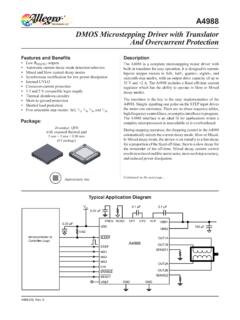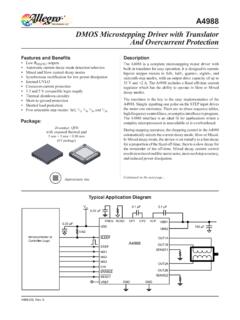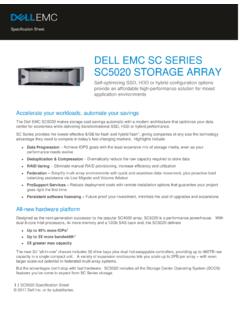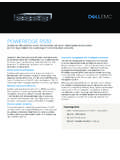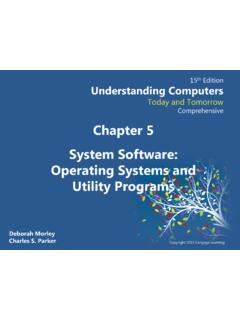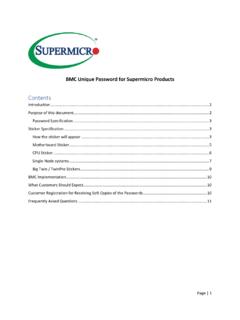Transcription of UM10204 I2C-bus specification and user manual - Pololu
1 UM10204I2C-bus specification and user manualRev. 6 4 April 2014 User manualDocument informationInfoContentKeywordsI2C, I2C-bus , Standard-mode, Fast-mode, Fast-mode Plus, Fm+, Ultra Fast-mode, UFm, High Speed, Hs, inter-IC, SDA, SCL, USDA, USCLA bstractPhilips Semiconductors (now NXP Semiconductors) developed a simple bidirectional 2-wire bus for efficient inter-IC control. This bus is called the Inter-IC or I2C-bus . Only two bus lines are required: a serial data line (SDA) and a serial clock line (SCL). Serial, 8-bit oriented, bidirectional data transfers can be made at up to 100 kbit/s in the Standard-mode, up to 400 kbit/s in the Fast-mode, up to 1 Mbit/s in the Fast-mode Plus (Fm+), or up to Mbit/s in the High-speed mode.
2 The Ultra Fast-mode is a uni-directional mode with data transfers of up to 5 information provided in this document is subject to legal disclaimers. NXP Semiconductors 2014. All rights manualRev. 6 4 April 2014 2 of 64 Contact informationFor more information, please visit: sales office addresses, please send an email to: SemiconductorsUM10204I2C-bus specification and user manual Revision User manual ; sixth releaseModifications: Figure 41 Rp(max) as a function of bus capacitance updated (recalculated) Figure 42 Rp(min) as a function of VDD updated (recalculated) manual ; fifth manual Rev.
3 Of today s applications require longer buses and/or faster speeds. Fast-mode Plus was introduced to meet this need by increasing drive strength by as much as 10 and increasing the data rate to 1 Mbit/s while maintaining downward compatibility to Fast-mode and Standard-mode speeds and software of the I2C-bus I2C-bus has become a de facto world standard that is now implemented in over 1000 different ICs and licensed to more than 50 companies. Many of today s applications, however, require higher bus speeds and lower supply voltages. This updated version of the I2C-bus specification meets those of the I2C-bus specificationOriginal 1982first releaseUM10204 All information provided in this document is subject to legal disclaimers.
4 NXP Semiconductors 2014. All rights manualRev. 6 4 April 2014 3 of 64 NXP SemiconductorsUM10204I2C-bus specification and user manual1. IntroductionThe I2C-bus is a de facto world standard that is now implemented in over 1000 different ICs manufactured by more than 50 companies. Additionally, the versatile I2C-bus is used in various control architectures such as System management Bus (SMBus), Power management Bus (PMBus), intelligent platform management interface (IPMI), Display Data Channel (DDC) and Advanced Telecom Computing Architecture (ATCA).This document assists device and system designers to understand how the I2C-bus works and implement a working application.
5 Various operating modes are described. It contains a comprehensive introduction to the I2C-bus data transfer, handshaking and bus arbitration schemes. Detailed sections cover the timing and electrical specifications for the I2C-bus in each of its operating of I2C-compatible chips should use this document as a reference and ensure that new devices meet all limits specified in this document. Designers of systems that include I2C devices should review this document and also refer to individual component data I2C-bus featuresIn consumer electronics, telecommunications and industrial electronics, there are often many similarities between seemingly unrelated designs.
6 For example, nearly every system includes: Some intelligent control, usually a single-chip microcontroller General-purpose circuits like LCD and LED drivers, remote I/O ports, RAM, EEPROM, real-time clocks or A/D and D/A converters Application-oriented circuits such as digital tuning and signal processing circuits for radio and video systems, temperature sensors, and smart cardsTo exploit these similarities to the benefit of both systems designers and equipment manufacturers, as well as to maximize hardware efficiency and circuit simplicity, Philips Semiconductors (now NXP Semiconductors)
7 Developed a simple bidirectional 2-wire bus for efficient inter-IC control. This bus is called the Inter IC or I2C-bus . All I2C-bus compatible devices incorporate an on-chip interface which allows them to communicate directly with each other via the I2C-bus . This design concept solves the many interfacing problems encountered when designing digital control are some of the features of the I2C-bus : Only two bus lines are required; a serial data line (SDA) and a serial clock line (SCL). Each device connected to the bus is software addressable by a unique address and simple master/slave relationships exist at all times; masters can operate as master-transmitters or as master-receivers.
8 It is a true multi-master bus including collision detection and arbitration to prevent data corruption if two or more masters simultaneously initiate data transfer. Serial, 8-bit oriented, bidirectional data transfers can be made at up to 100 kbit/s in the Standard-mode, up to 400 kbit/s in the Fast-mode, up to 1 Mbit/s in Fast-mode Plus, or up to Mbit/s in the High-speed information provided in this document is subject to legal disclaimers. NXP Semiconductors 2014. All rights manualRev. 6 4 April 2014 4 of 64 NXP SemiconductorsUM10204I2C-bus specification and user manual Serial, 8-bit oriented, unidirectional data transfers up to 5 Mbit/s in Ultra Fast-mode On-chip filtering rejects spikes on the bus data line to preserve data integrity.
9 The number of ICs that can be connected to the same bus is limited only by a maximum bus capacitance. More capacitance may be allowed under some conditions. Refer to Section 1 shows an example of I2C-bus applications. Designer benefitsI2C-bus compatible ICs allow a system design to progress rapidly directly from a functional block diagram to a prototype. Moreover, since they clip directly onto the I2C-bus without any additional external interfacing, they allow a prototype system to be modified or upgraded simply by clipping or unclipping ICs to or from the are some of the features of I2C-bus compatible ICs that are particularly attractive to designers: Functional blocks on the block diagram correspond with the actual ICs; designs proceed rapidly from block diagram to final schematic.
10 No need to design bus interfaces because the I2C-bus interface is already integrated of I2C-bus applicationsI2CA/D or D/AConvertersI2 CGeneral PurposeI/O ExpandersI2 CLED ControllersVDD4I2 CRepeaters/Hubs/ExtendersI2 CDIP SwitchesVDD5I2 CSlaveVDD0 VDD1 PCA9541I2 CMaster Selector/DemuxI2 CMultiplexersand SwitchesVDD2I2C Portvia HW orBit BangingI2 CBus ControllersMCUs8 MCUsI2 CSerial EEPROMsLCD Drivers(with I2C)I2 CReal Time Clock/CalendarsVDD3I2 CTemperatureSensorsBridges(with I2C)SPIUARTUSB002aac858UM10204 All information provided in this document is subject to legal disclaimers.


